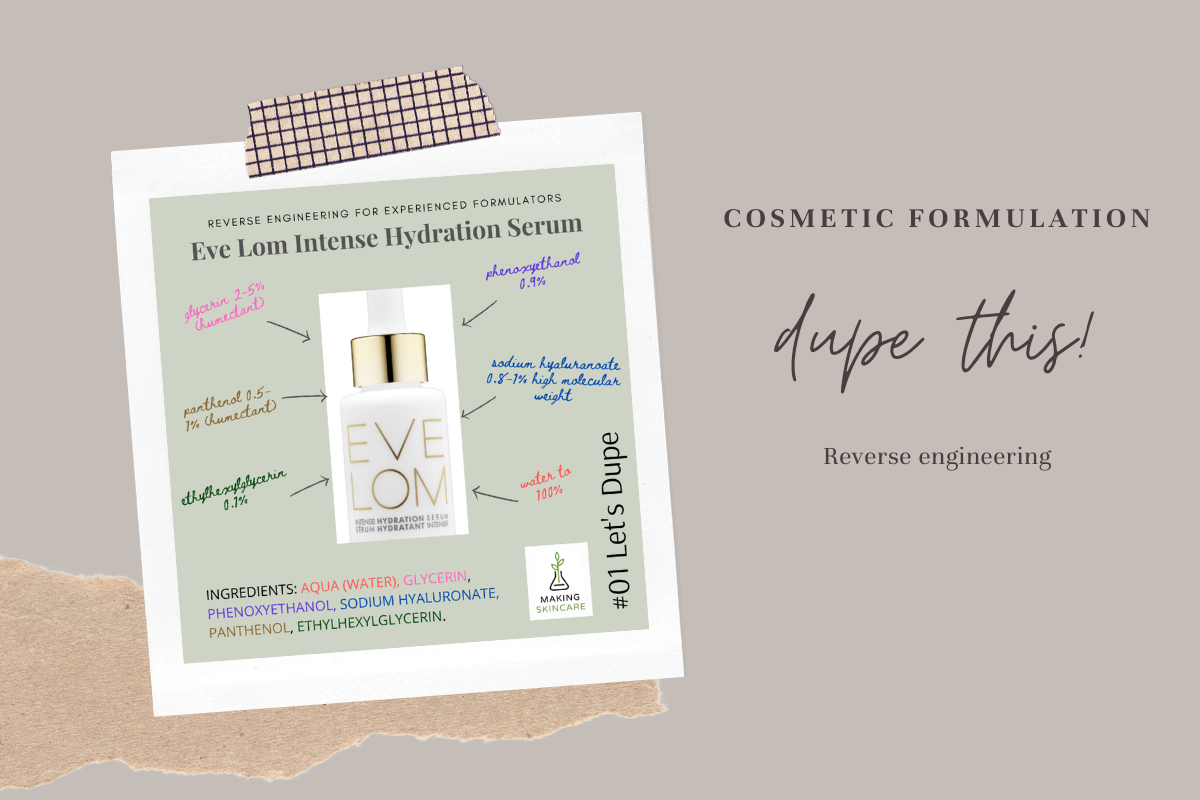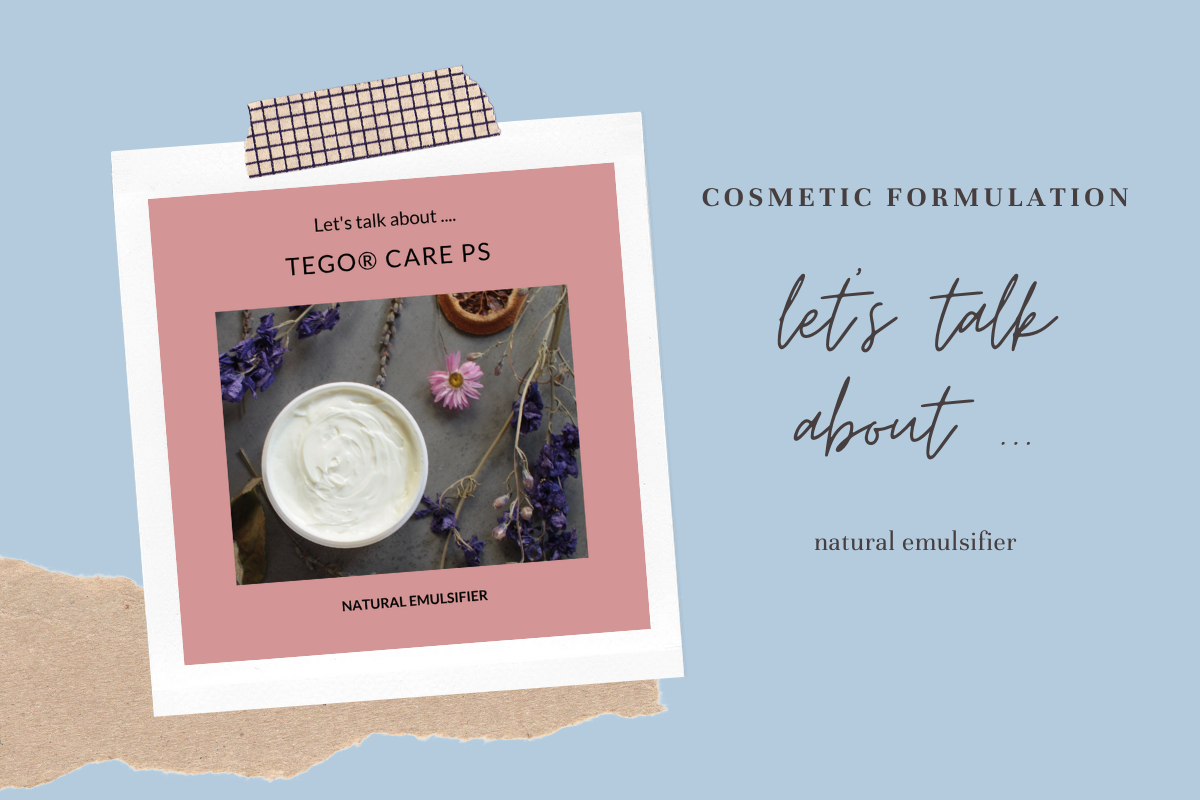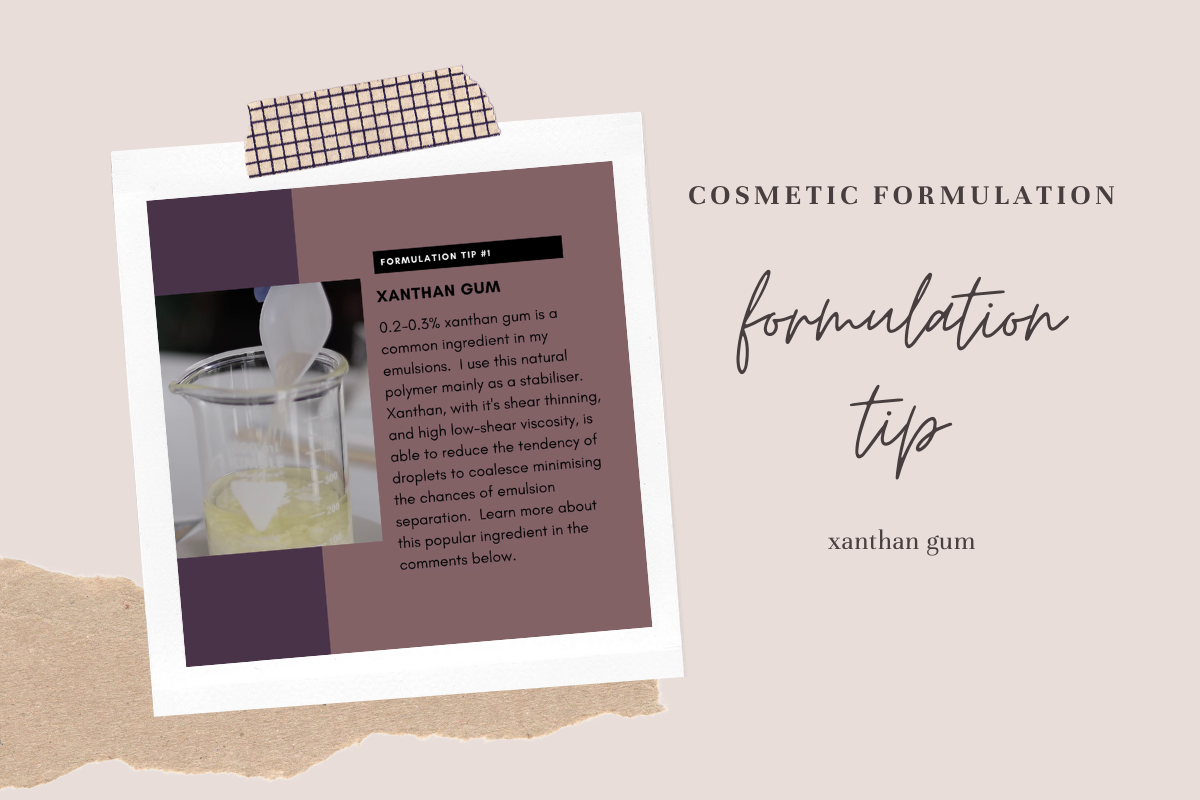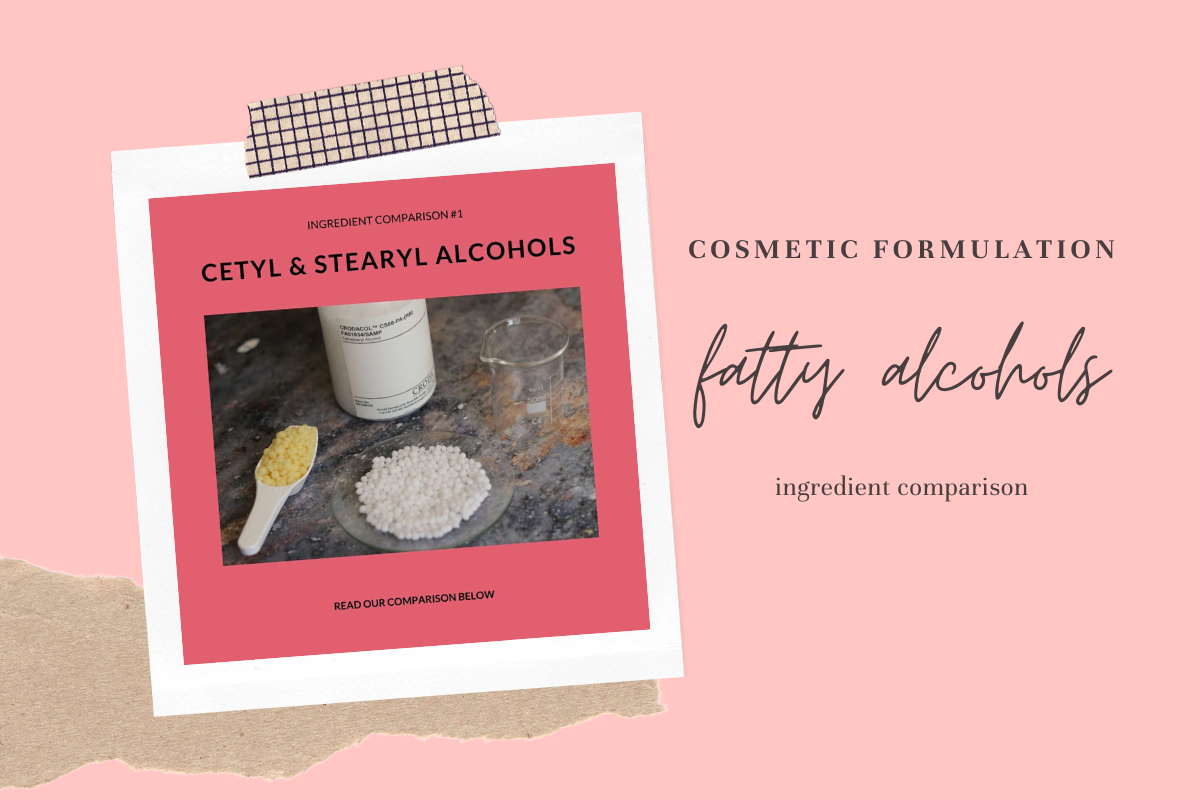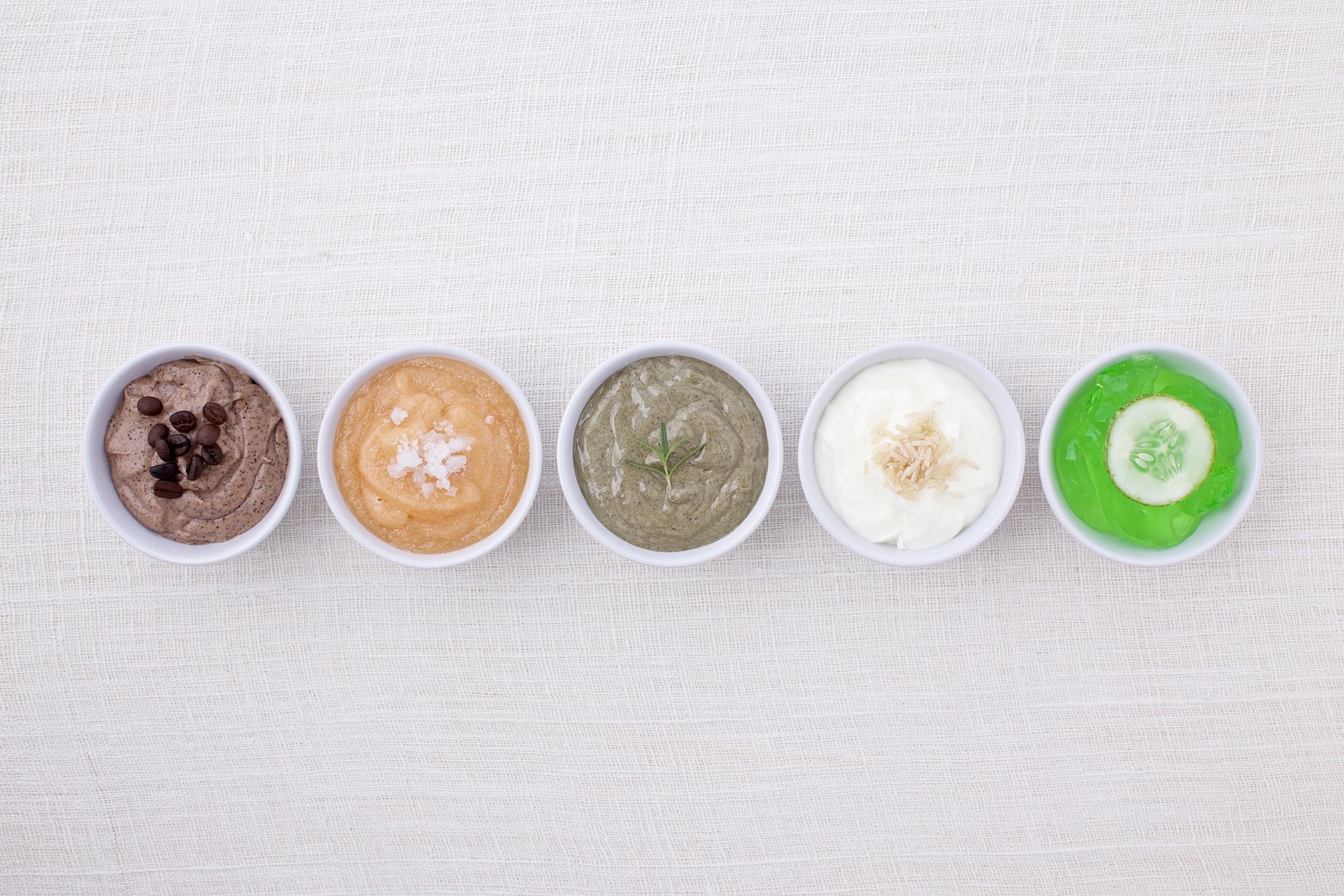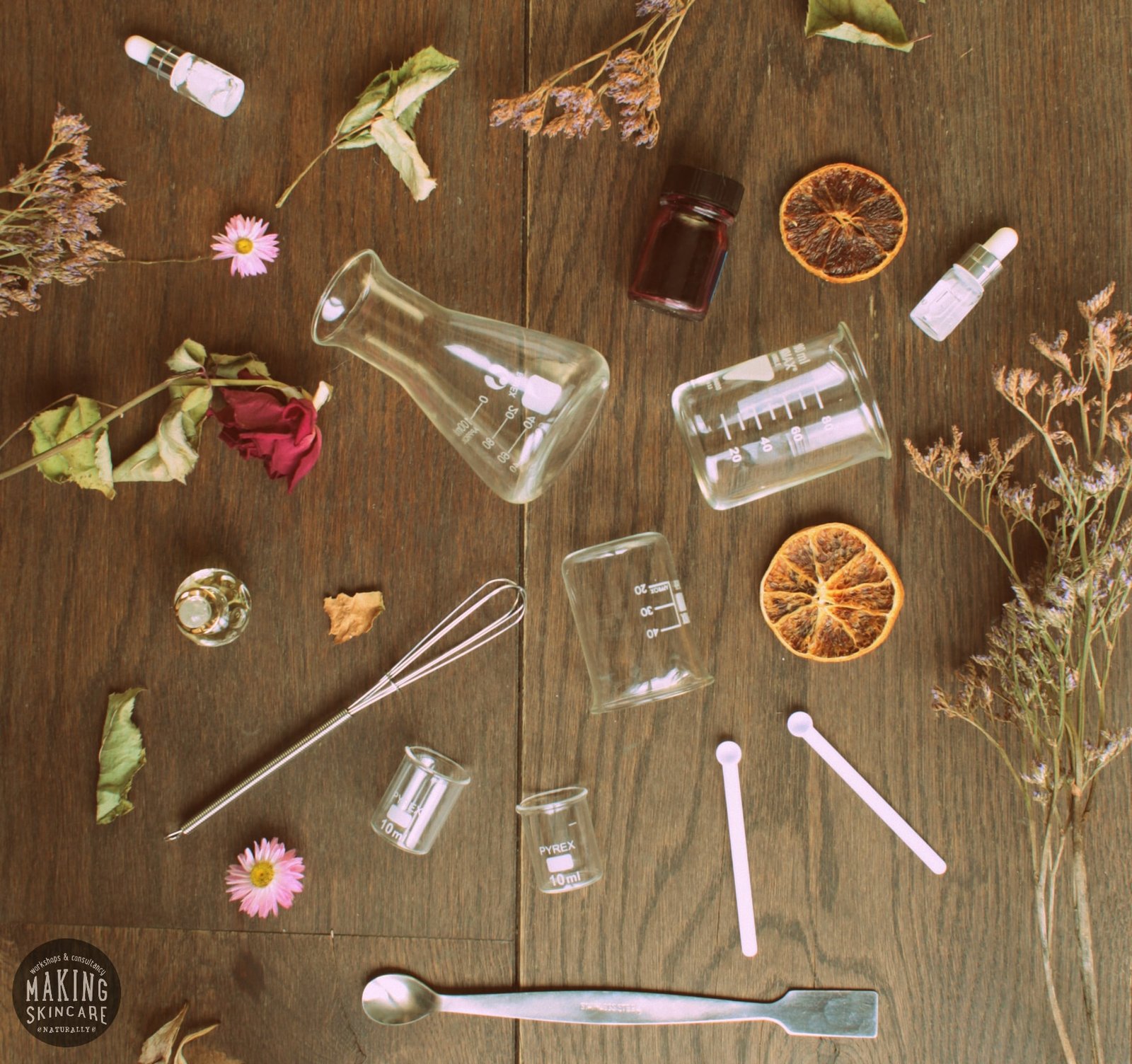With over 35,000 students, our scientists show how to make natural and safe cream, lotion, moisturizer. Click to view our free formulation guides & recipes.

seabalance by carbonwave seaweed based natural emulsifier
SeaBalance 2000 from CarbonWave is a new COSMOS approved, natural, cold-process emulsifier derived from sargassum seaweed. (INCI name: Sargassum Fluitans/Natans Extract (and) Xanthan Gum (and) Pentylene Glycol). Above is our second…
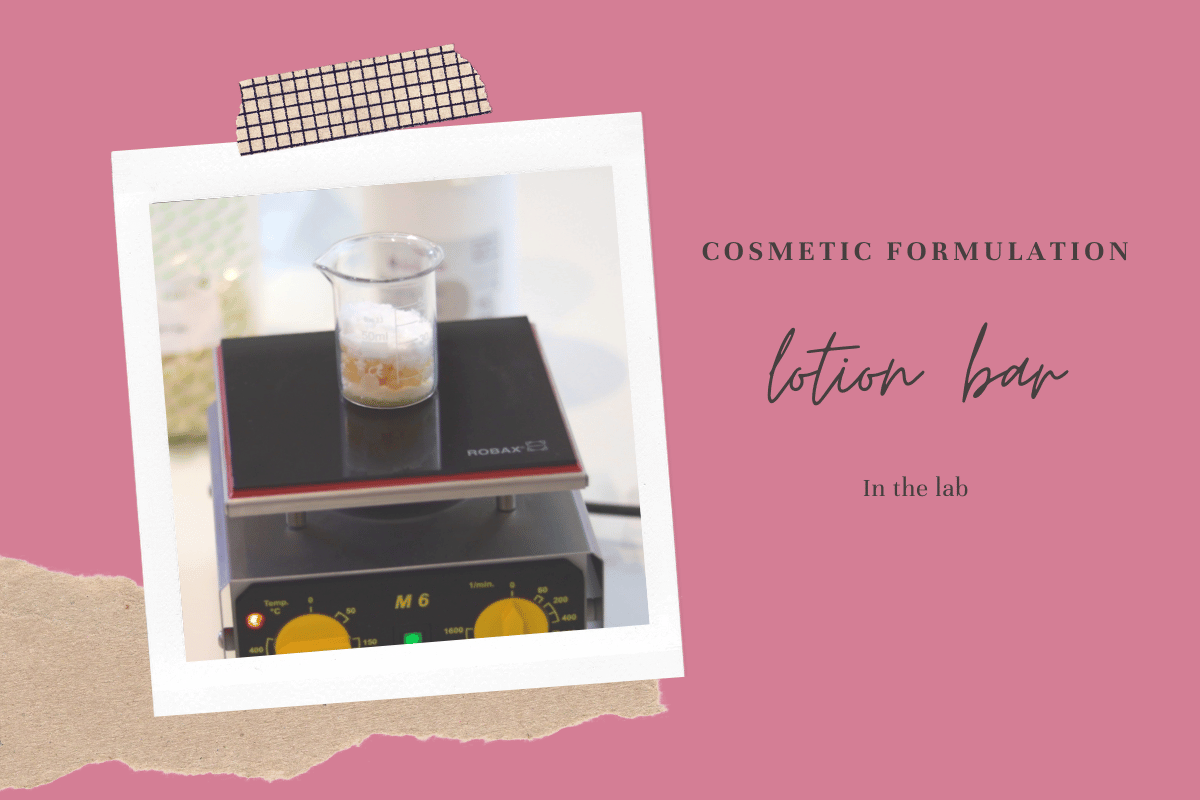
solid lotion recipe
Sustainable, solid cosmetics are trending. Our natural, moisturizing lotion bar recipe is easy to make. To make your own, add more emulsifier, butter and thickener in place of water. For…

reverse engineering
To understand the process of how to reverse engineer a cosmetic product, check out the two YouTube videos below which we created with Christine Hwang, Annalisa Branca @skinperspective and Alex…
Formulations don't have to be complex. This one is super simple and a breeze to dupe. Cold process, no oil phase, and all ingredients are easy to get hold of…
How to make your emulsion thicker or thinner. First analyze your formula to see what ingredients are contributing to viscosity. This is usually the emulsifier blend, gums/polymers and any fatty…
TEGO® Care PS from Evonik (INCI: Methyl Glucose Sesquistearate) is a popular DIY natural emulsifier in Europe, especially amongst German DIY formulators, where it is known by the name of…
0.2-0.3% xanthan gum is a common ingredient in my emulsions. I use this natural polymer mainly as a stabiliser. Xanthan, with it's shear thinning, and high low-shear viscosity, is able…
Want to make your emulsion thicker, more creamy and stable? Just add 1-2% of either: cetyl alcohol (cetanol (1-hexadecanol C16)); stearyl alcohol (1-octadecanol C18); or cetostearyl alcohol (blend of C16…
How to formulate like a pro! Jane is responsible for teaching skincare and haircare formulation at a UK University's Cosmetic Science Degree. Below are Jane's top tips and tricks to…
Scroll down for our Lotion tutorial but if you would like to make other products, sign up to our Free, online formulation course from Chemists Corner, Swiftcraftymonkey and Making Skincare…




